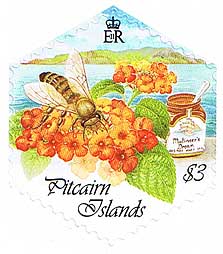Systemic pesticides such as neonicotinoids are commonly used on flowering crops visited by pollinators, and their use has been implicated in the decline of insect pollinator populations in Europe and North America. Several studies show that neonicotinoids affect navigation and learning in bees but few studies have examined whether these substances influence their basic motor function. Here, we investigated how prolonged exposure to sublethal doses of four neonicotinoid pesticides (imidacloprid, thiamethoxam, clothianidin, dinotefuran) and the plant toxin, nicotine, affect basic motor function and postural control in foraging-age worker honeybees.
We used doses of 10 nM for each neonicotinoid: field-relevant doses that we determined to be sublethal and willingly consumed by bees. The neonicotinoids were placed in food solutions given to bees for 24 h. After the exposure period, bees were more likely to lose postural control during the motor function assay and fail to right themselves if exposed to imidacloprid, thiamethoxam, clothianidin. Bees exposed to thiamethoxam and nicotine also spent more time grooming. Other behaviours (walking, sitting and flying) were not significantly affected. Expression of changes in motor function after exposure to imidacloprid was dose-dependent and affected all measured behaviours. Our data illustrate that 24 h exposure to sublethal doses of neonicotinoid pesticides has a subtle influence on bee behaviour that is likely to affect normal function in a field setting.
Source: Sally M Williamson, Sarah J Willis, Geraldine A Wright. Ecotoxicology 2014 Jul 11. Epub 2014 Jul 11.

- Log in to post comments
